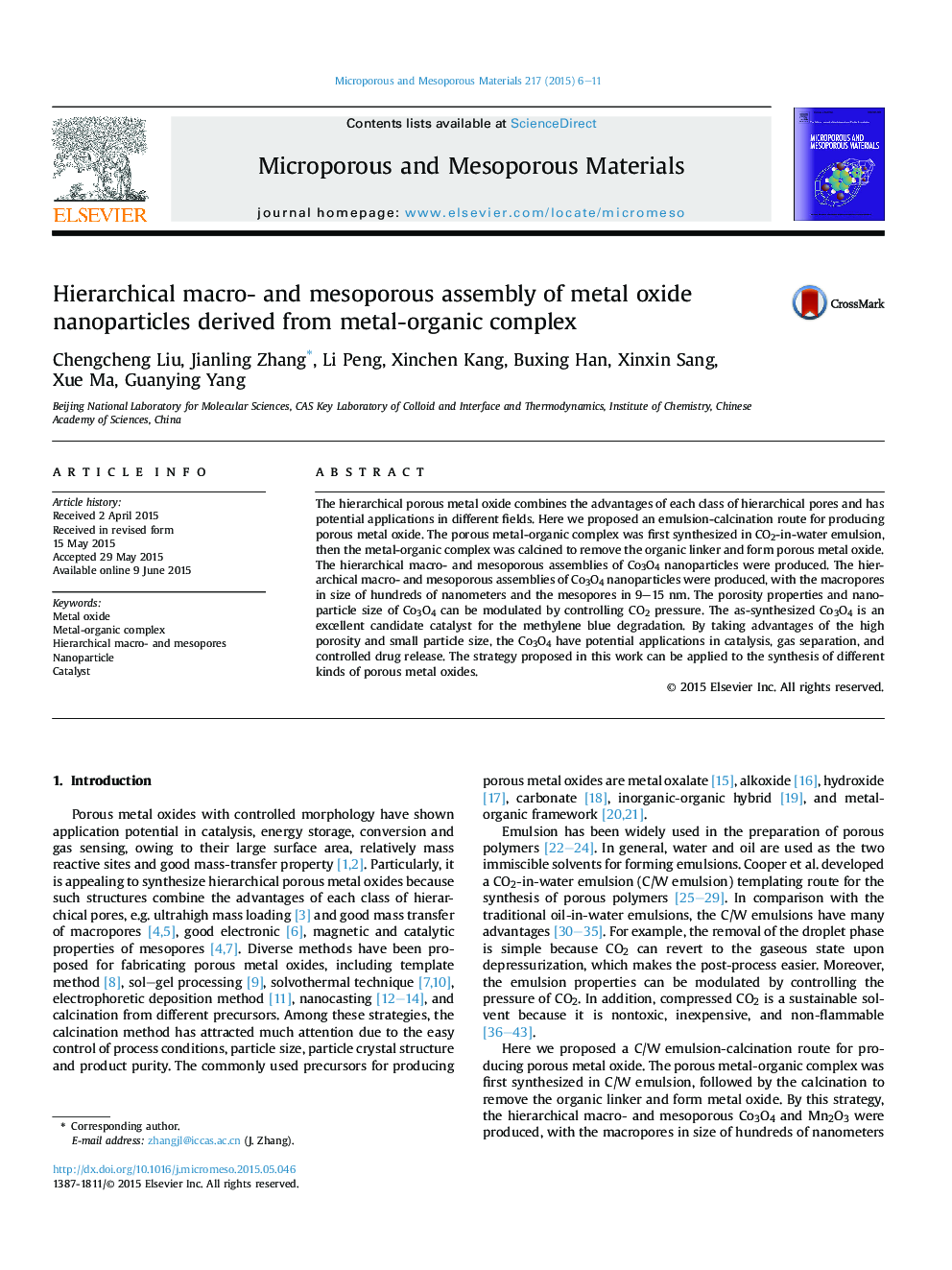| Article ID | Journal | Published Year | Pages | File Type |
|---|---|---|---|---|
| 72342 | Microporous and Mesoporous Materials | 2015 | 6 Pages |
•The macro- and mesoporous assemblies of Co3O4 nanoparticles were produced.•The porosity properties and nanoparticle size of Co3O4 are tunable.•The Co3O4 is excellent catalyst for the photocatalytic reaction of MB degradation.
The hierarchical porous metal oxide combines the advantages of each class of hierarchical pores and has potential applications in different fields. Here we proposed an emulsion-calcination route for producing porous metal oxide. The porous metal-organic complex was first synthesized in CO2-in-water emulsion, then the metal-organic complex was calcined to remove the organic linker and form porous metal oxide. The hierarchical macro- and mesoporous assemblies of Co3O4 nanoparticles were produced. The hierarchical macro- and mesoporous assemblies of Co3O4 nanoparticles were produced, with the macropores in size of hundreds of nanometers and the mesopores in 9–15 nm. The porosity properties and nanoparticle size of Co3O4 can be modulated by controlling CO2 pressure. The as-synthesized Co3O4 is an excellent candidate catalyst for the methylene blue degradation. By taking advantages of the high porosity and small particle size, the Co3O4 have potential applications in catalysis, gas separation, and controlled drug release. The strategy proposed in this work can be applied to the synthesis of different kinds of porous metal oxides.
Graphical abstractFigure optionsDownload full-size imageDownload as PowerPoint slide
